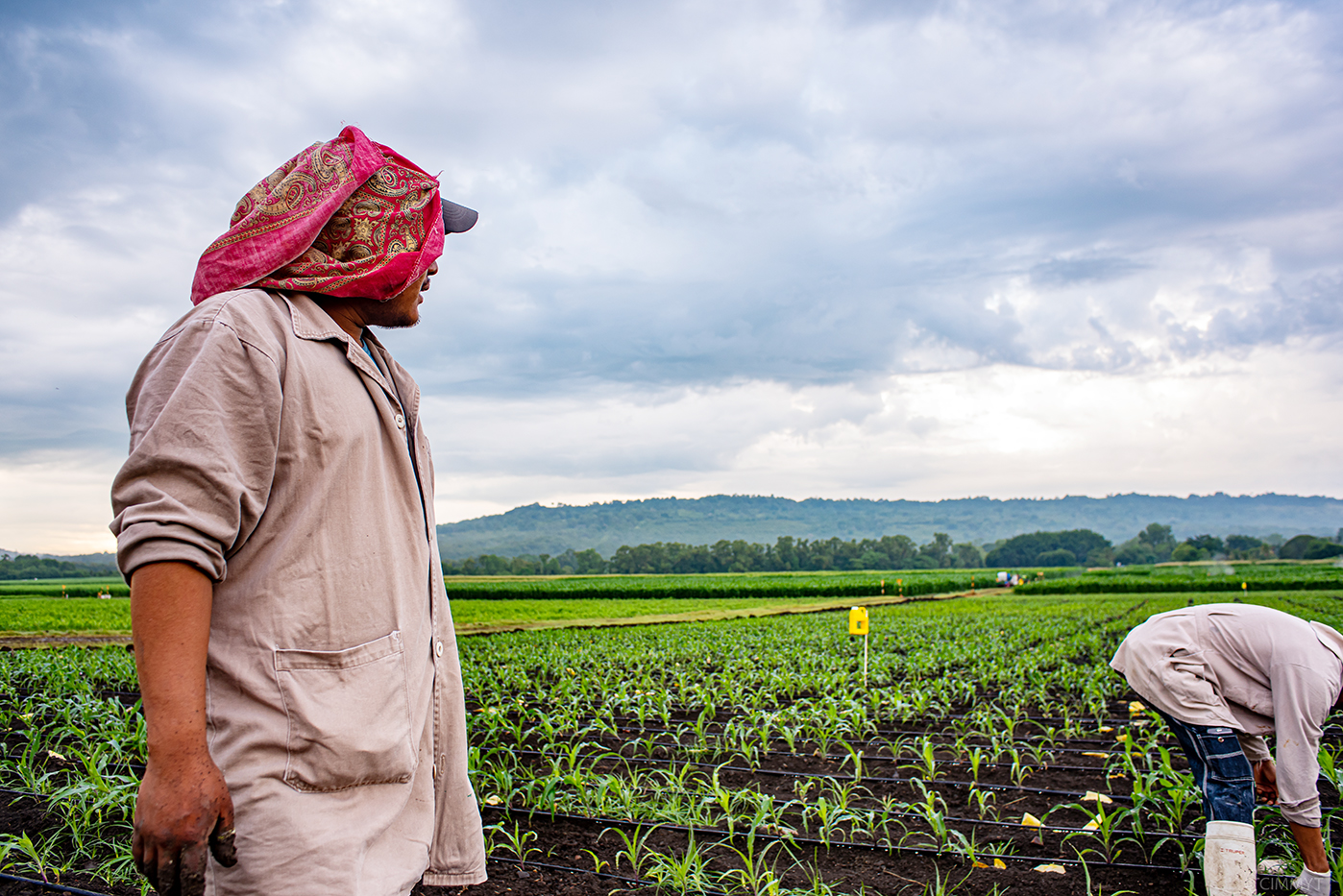Design thinking for sustainable futures
New planning methodology can support global food systems transformation

Esta historia también está disponible en español: Pensamiento de diseño para un futuro sostenible
The success of food systems across the world is severely limited by long-term challenges, like yield gaps and climate vulnerability. However, research-based solutions — in public policy, agricultural value chains, and finance — are often constrained by short-termism and zero-sum thinking.
To better respond to current and emerging challenges, decision makers need to switch the focus to multi-sector, evidence-based collaboration.
To aid this process, a multi-disciplinary team of agricultural researchers and development practitioners have proposed a new approach to tackling the shortcomings of global food production systems. Developed by CIMMYT scientists in collaboration with the Alliance of Bioversity International and the International Center for Tropical Agriculture (the Alliance), the Integrated Agri-Food System Initiative (IASI) methodology aims to transform national food systems by using design thinking — which means understanding specific needs to define innovative solutions — to achieve consensus between varied stakeholders.
The team developed the IASI model based on the successful implementation of CIMMYT’s integrated development projects in Colombia and Mexico, which focused on working with actors in the public, private and civil sectors to enhance local maize systems. These initiatives capitalized on social and political windows of opportunity that helped build stakeholder consensus around health, nutrition, food security and development aspirations.
In both countries, the IASI focus on drivers of change helped broaden lists of potential solutions and more effectively embed new strategies within government institutions, thereby increasing the likelihood of impact and continuity across successive political regimes. In Mexico, for example, the process led to the creation of a tactical plan for improving agricultural production systems by translating innovation networks into knowledge co-creation hubs. These include research, demonstration modules, and extension areas where members of the local community can help test, improve, and adapt sustainable farming practices and technologies, and provide a foundation for continuous scaling.
“CIMMYT’s integrated development approach to maize systems transformation in Mexico and Colombia laid the foundations of the IASI methodology by overcoming government transitions, annual budget constraints and win-or-lose rivalry between stakeholders in favor of equity, profitability, resilience and sustainability,” said CIMMYT Director General a.i. Bram Govaerts.
Ultimately, the IASI approach offers public officials and development practitioners a means of transforming food systems by scaling out innovative farming practices and technologies that lead to sustainably managed natural resources and improved nutrition and food security.
How it works
According to a paper published in 2021, the first step for applying the IASI methodology is to identify windows of opportunity. These will vary across different national contexts, and might arise with political transitions, fiscal crises, shifts in trade conditions for key commodities, or new donor initiatives — in short, the times when influential actors are re-evaluating their goals and how to reach them, and are therefore more likely to entertain new approaches and information sources.
Once the opportunity has been identified, there are six major steps to applying the IASI methodology. First, experts must examine the current status and the business-as-usual scenario based on analysis of the socioeconomic, political, and sectoral context and model-based projections. At the same time, stakeholders determine a preferred future scenario based on assessment of national implications and define the key drivers of change.
Defined criteria are then applied to these stakeholder and expert inputs to validate drivers of change and identify strategies and actions that can steer toward the desired future scenario. These could include, for example, public policies, value chain and market interventions, or biotechnology applications, which would be reviewed and prioritized by high-level decision makers.
Stakeholders then agree on measurable targets and tangible, time-bound actions towards the preferred future scenario, and build shared commitments to a tactical implementation plan in collaboration with partners. Ongoing stakeholder engagement would be organized around an online dashboard that tracks actions and progress towards targets, while also supporting course correction and coordinated investment. By following these steps, the creators of the IASI methodology propose the construction of a “global food systems transformation network” to help co-design and co-implement agricultural development projects that bring together multiple partners and donors for global agricultural systems transformation.
As the approach is refined and further applications are built, they expect that this network will harness efforts to initiate a new field of research and global practice on “integrated methodologies for food system transformation and innovation” — analogous to the fields of business administration and organizational development.
IASI serves as the backbone of the new CGIAR Regional Integrated Initiatives, which draw on capacities from regional international agricultural research centers and programs to deliver global agrifood system transformation.

This work would not have been possible without the support of our partners, Alliance of Bioversity International and CIAT and CGIAR.